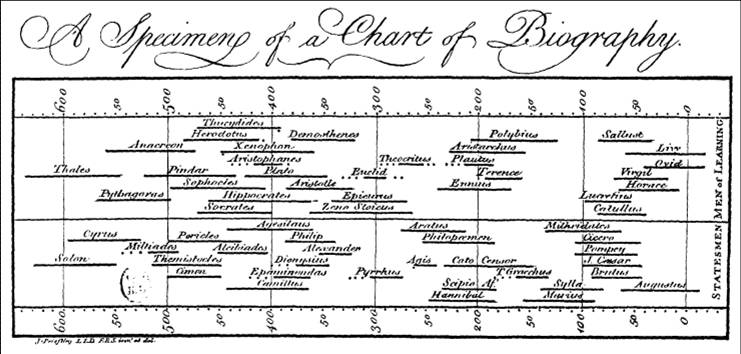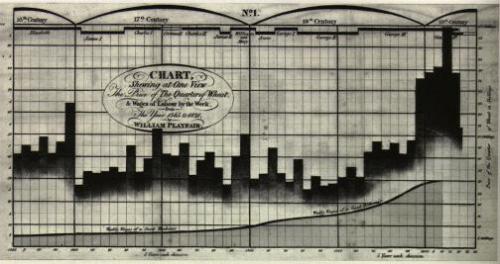
The genealogy of project scheduling
I ran into this post from Pat Weaver of the Mosaic Project blog discussing the failure of project scheduling and how this is caused by its implementation of ideas from the 18th rather than the mid 20th century where notions such as the Critical Path Method (CPM) was invented.
But most interesting to me was the examples of Gantt/bar charts that Pat Weaver illustrates in the post. I’d like to repost them here since I find it fascinating and may be of interest for project management history buffs:
“The concept of Bar Charts was developed in the 18th century (or possibly earlier). Joseph Priestley (1733-1804) published his ‘Chart of Biography’:
He is quoted as saying “…a longer or a shorter space of time may be most commodiously and advantageously represented by a longer or a shorter line.”
A few years later a full range of modern charts were published by William Playfair (1759-1823) in his ‘Commercial and Political Atlas’ of 1786:
By the end of the 19th century sophisticated barcharts appear to have been in general use (at least in Europe – the project below was built in 1910):
For more on the early development of scheduling see A Brief History of Scheduling.
Henry Gantt developed his production management systems for factories in the early part of the 20th century with a range of charts designed as production monitoring and control tools:
Importantly Gantt did not use simple bar charts and had no interest in one-off projects. He was focused on machine shop efficiency and production quotas:
For more on his work see: Henry L. Gantt – A Retrospective view of his work.”
A very interesting genealogy of project scheduling indeed!





